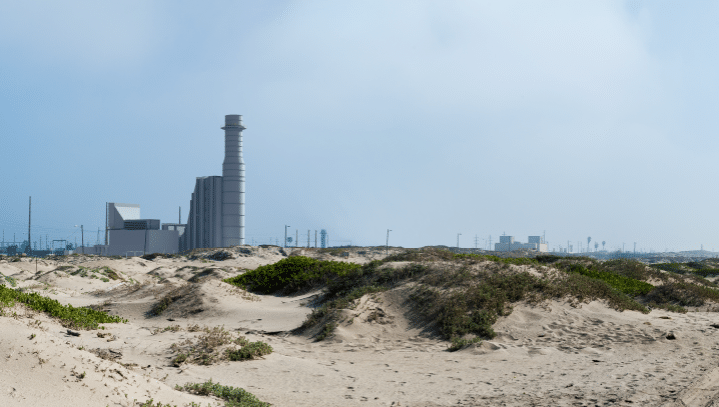In addition to the rapid growth of wind and solar, the other disruptive trend in the U.S. electricity landscape in recent years has been the accelerated deployment of natural gas generation. The availability of vast reserves of previously inaccessible gas reserves locked in shale deposits through fracking has brought sustained low gas prices, which has in turn led to a massive deployment of gas-fired power plants over the last fifteen years.
But thanks to advances in battery storage, these two trends are now colliding in California. Late last week the California Energy Commission (CEC) accepted an offer by the state’s grid operator (California ISO) to develop an alternatives to a proposed gas plant near Oxnard. These would include the pairing of renewable energy and energy storage as well as demand response technologies.
NRG’s Puente Power Project, near Oxnard, had already been approved by the California Public Utilities Commission to provide for reliability needs in the area around Venture County. The peaker plant would have a maximum output of 271 MW, and would allow for the retirement of two gas units in Oxnard by 2021.
Natural gas plants like Puente have long been the standard means to provide flexible power to meet peak demand. However California appears to be rethinking this in the wake of the Aliso Canyon gas leak. This colossal disaster drove the deployment of 80 MW of energy storage to meet the gap in flexible power, including some of the largest battery storage systems deployed in the United States to date.
The decision to study alternatives to the Puente plant follows a decision by the Los Angeles Department of Water and Power last week to conduct a study to determine whether or not clean energy alternatives could replace gas plants which the public utility had planned to rebuild.
There are political constituencies that support the use of batteries paired with renewable energy generation in place of gas plants, as embodied in the membership of Sierra Club, Environmental Defense Center and Center for Biological Diversity, all three of whom have intervened in this decision. And while such groups may have limited power to force operational power plants offline, the bar to stopping new projects is lower, especially given California’s rigorous environmental laws.
California ISO now has until June 16 to commit to this study. If it does, CEC is requiring an expedited study, to be completed over a 3-4 week time period.
But whether or renewable energy and batteries end up being dedicated to meet reliability needs in Ventura County, the trend is that increasing deployment of renewable energy is driving down gas usage in California. During this spring higher levels of both solar and hydro output brought California’s gas use to a 5-year low.
As such, new projects added to California’s already robust fleet of gas plants could risk becoming stranded assets. And while Texas is a very different market, for this the fate of the 758 MW Panda Temple gas plant, which went bankrupt only three years in operation, serves as a cautionary tale.
This content is protected by copyright and may not be reused. If you want to cooperate with us and would like to reuse some of our content, please contact: editors@pv-magazine.com.









The gas price owner is really stupid ?
Who owns the price?
Can you make the gas prices go up in California.
Renewables need to be responsible for meeting the demand. They could eliminate the profitability for fast-start gas plants.